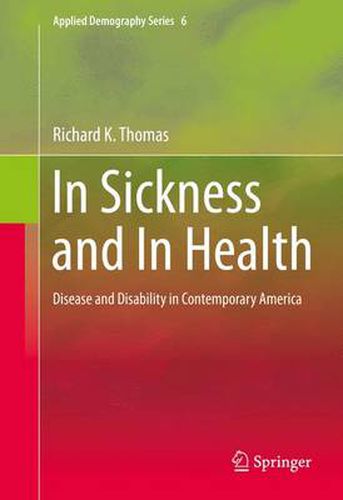Readings Newsletter
Become a Readings Member to make your shopping experience even easier.
Sign in or sign up for free!
You’re not far away from qualifying for FREE standard shipping within Australia
You’ve qualified for FREE standard shipping within Australia
The cart is loading…






This title is printed to order. This book may have been self-published. If so, we cannot guarantee the quality of the content. In the main most books will have gone through the editing process however some may not. We therefore suggest that you be aware of this before ordering this book. If in doubt check either the author or publisher’s details as we are unable to accept any returns unless they are faulty. Please contact us if you have any questions.
The increasing importance of sickness and disability data across health-related disciplines is the focus of this concise but comprehensive resource. It reviews the basics of morbidity at the population level by defining core concepts, analyzing why morbidity has overtaken mortality as central to demographic study, and surveying ways these data are generated, accessed, and measured. Subsequent chapters demonstrate how this knowledge can be used to better understand-and potentially solve-critical public health issues, benefitting not only populations served, but also areas such as health services planning, resource allocation, and health policy-setting.
To make this material useful to the most readers, this reference:
Explains
why and how morbidity data are categorized by health professionals and
other data users. Examines
various methods of identifying and measuring morbidity data.
Identifies
demographic and non-demographic factors associated with morbidity. Describes
and evaluates sources of U.S.
morbidity data. Reviews the current state of morbidity in the U.S., and what it means for
healthcare and society in general. Suggests
future uses of morbidity data in reducing health disparities and improving population health.
In Sickness and In Health is uniquely relevant to demographers and demography students, public health professionals, and epidemiologists. Its presentation of concepts and applications makes the book a valuable classroom text and a useful guide for those addressing challenges facing U.S. healthcare.
$9.00 standard shipping within Australia
FREE standard shipping within Australia for orders over $100.00
Express & International shipping calculated at checkout
This title is printed to order. This book may have been self-published. If so, we cannot guarantee the quality of the content. In the main most books will have gone through the editing process however some may not. We therefore suggest that you be aware of this before ordering this book. If in doubt check either the author or publisher’s details as we are unable to accept any returns unless they are faulty. Please contact us if you have any questions.
The increasing importance of sickness and disability data across health-related disciplines is the focus of this concise but comprehensive resource. It reviews the basics of morbidity at the population level by defining core concepts, analyzing why morbidity has overtaken mortality as central to demographic study, and surveying ways these data are generated, accessed, and measured. Subsequent chapters demonstrate how this knowledge can be used to better understand-and potentially solve-critical public health issues, benefitting not only populations served, but also areas such as health services planning, resource allocation, and health policy-setting.
To make this material useful to the most readers, this reference:
Explains
why and how morbidity data are categorized by health professionals and
other data users. Examines
various methods of identifying and measuring morbidity data.
Identifies
demographic and non-demographic factors associated with morbidity. Describes
and evaluates sources of U.S.
morbidity data. Reviews the current state of morbidity in the U.S., and what it means for
healthcare and society in general. Suggests
future uses of morbidity data in reducing health disparities and improving population health.
In Sickness and In Health is uniquely relevant to demographers and demography students, public health professionals, and epidemiologists. Its presentation of concepts and applications makes the book a valuable classroom text and a useful guide for those addressing challenges facing U.S. healthcare.